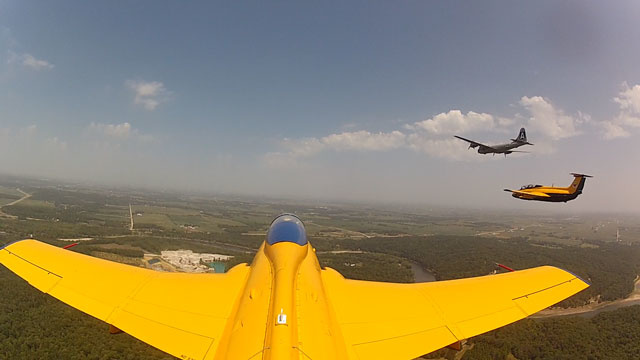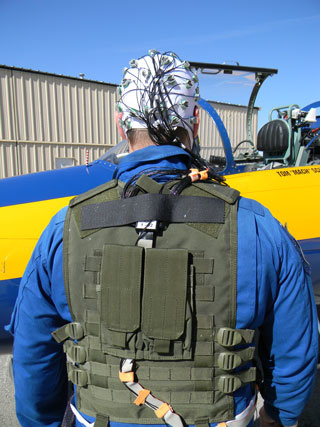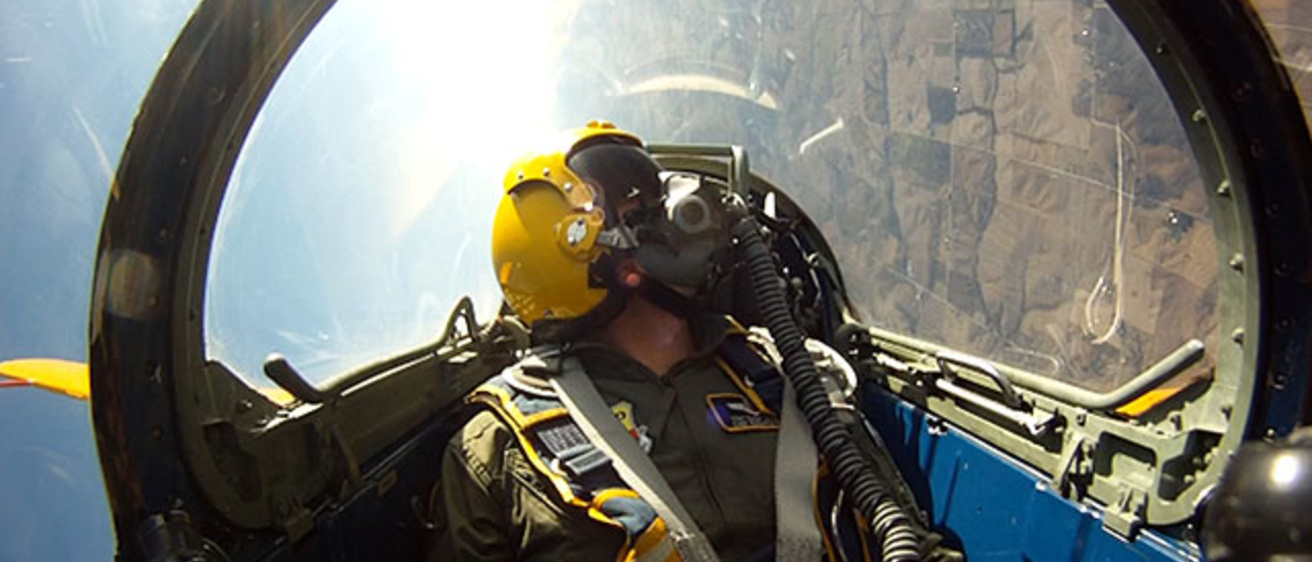A University of Iowa project to combat aircraft crew spatial disorientation in flight may result in safer commercial air travel.
That’s the objective of a three-year, $1.2 million NASA grant to develop concepts and methods to help crews avoid, detect, mitigate, and recover from hazardous situations that could lead to loss of control due to spatial disorientation.
Although commercial air transport remains the safest mode of transportation, there is always room for improvement, according to Thomas Schnell, project principal investigator and director of the UI’s Operator Performance Laboratory (OPL) in the Center for Computer-Aided Design.
Schnell says that pilot spatial disorientation and loss of energy state awareness remain leading causes of fatality and hull loss in the worldwide commercial jet fleet. This, in spite of advanced flight instrumentation and sophisticated automation that is supposed to protect the aircraft, its crew, and its passengers.
For example: France’s Bureau of Investigation and Analysis, in its final report on the June 2009 crash of Air France Flight 447 that killed 228 people when it plunged into the Atlantic Ocean, pointed to pilot error and a failure to react effectively to technical problems. The report noted pilots failed to respond effectively to problems with the plane’s speed sensors or correct its trajectory after the autopilot disconnected.

In short, the pilots never understood they were in a sustained stall, so they responded by pointing the nose of the aircraft upward—rather than downward—in an attempt to recover.
Schnell notes that the aircraft had onboard systems, called envelope protection, which under normal circumstances protects the crew against exceeding flight parameters. The failed speed sensors caused the envelope protection to fail and the crew was unable to break with their ingrained, protected-mode, flight-handling response under these non-normal circumstances, says Schnell.
“Correct perception and awareness of attitude and energy state is a fundamental requirement for safe flight. The human sensory system is optimized for perceiving orientation in pedestrian, ground-based situations with great reliance on visual cues. But in accelerated inertial systems such as aircraft, the visual sense often completely dominates the assessment of aircraft attitude with the subordinate cues often providing misleading inputs that pilots are trained to ignore,” says Schnell, a commercial pilot as well as associate professor of mechanical and industrial engineering in the UI College of Engineering.
“Absent natural visual cues, pilots rely on artificial visual cues from primary flight instruments. When pilot assessment of these cues founders, flight crew loss of attitude and energy state awareness can result, yielding loss of flight control departures such as roll and pitch excursions, energy loss, and eventual loss of the aircraft,” he says.
The University of Iowa project has four steps:
- Analyze the underlying mechanisms that cause flight crews to become disorientated.
- Develop flight deck interventions that provide the crew with the necessary situation awareness information.
- Develop a concept of operation for flight deck operations, including flight simulator techniques to experimentally study such situations.
- Assess proposed flight deck interventions by evaluating responses from the crew through flight simulator tests and in the UI OPL instrumented L-29 flight test jet aircraft.

Here’s how the project will be conducted. Schnell or other OPL staff pilots will serve as safety crew, meaning they will be seated in the front seat of the cockpit of an L-29 jet trainer while performing take-offs, landings and set-ups for test maneuvers. The evaluation pilots—all commercial airline pilots—will wear special cognitive performance data suits and fly the test maneuvers while the safety pilot ensures that the proper flight test envelope is maintained.
After the test flights have been conducted in 2014, Schnell and his team will analyze the collected data and make safety improvement recommendations to the aviation industry.
“The resulting avionics interventions should provide new capabilities to enable pilots to better understand and safely respond to situations that involve complexities in attitude and energy state awareness and control,” Schnell says.
Schnell also serves as CCAD director of project development and research, holds joint appointments as associate professor in the departments of Occupational and Environmental Health, Electrical and Computer Engineering, and Neurology, and conducts human factors research in the UI Public Policy Center.
UI’s OPL is the project lead organization, with Rockwell Collins and the Boeing Company being subcontractors. Schnell’s co-principal investigators on the project are John P. Dwyer of Boeing and Timothy J. Etherington from Rockwell Collins. Additional team members are Randall J. Mumaw and Michael P. Snow of Boeing and Geoffrey Shapiro and Laura Smith-Velazquez of Rockwell Collins.
